Why you can trust Tom's Hardware
Firmware
Biostar’s BIOS and the other Z690 boards we’ve looked at previously keep the same look as the last generation. There’s an EZ Mode that's more informational than tweakable, covering high-level status information, including RAM and CPU speed, temperatures and more. Once in the Advanced section, there are headings across the top with options under each. There’s a fair amount of switching sections to reach all of the overclocking functionality, and the listing of some values in milliwatts is confusing. I’d also like to see a description for highlighted items, as most other boards have. But outside of that, the BIOS is easy to navigate and read, with high-contrast dark grey background and white letters.

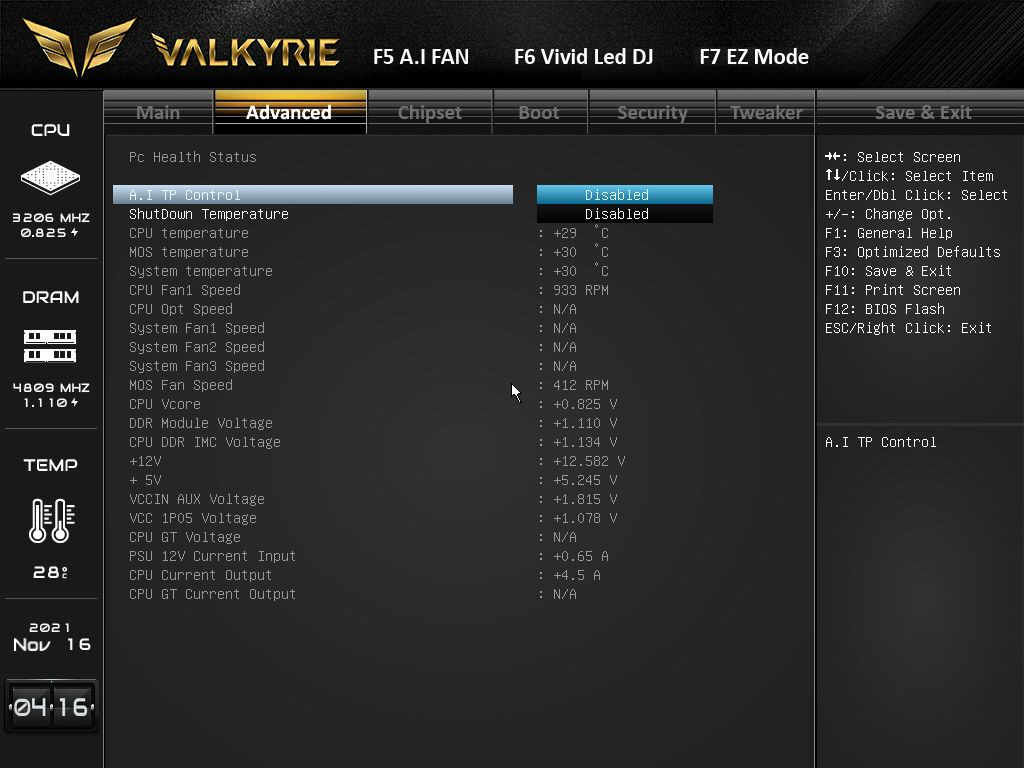
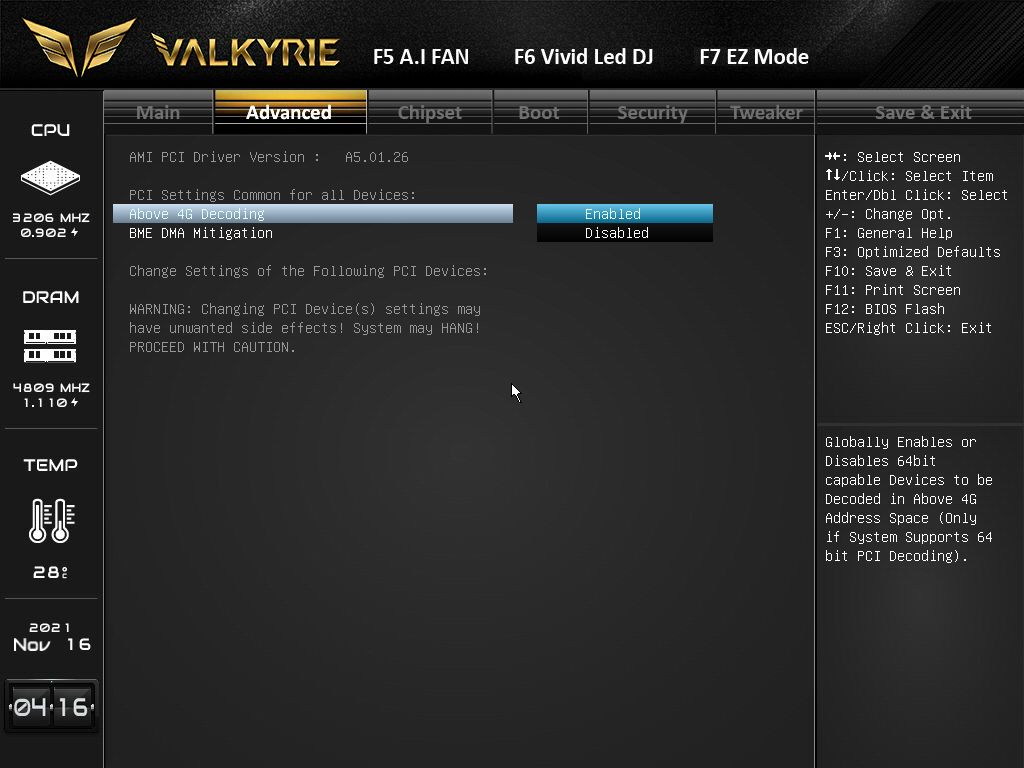
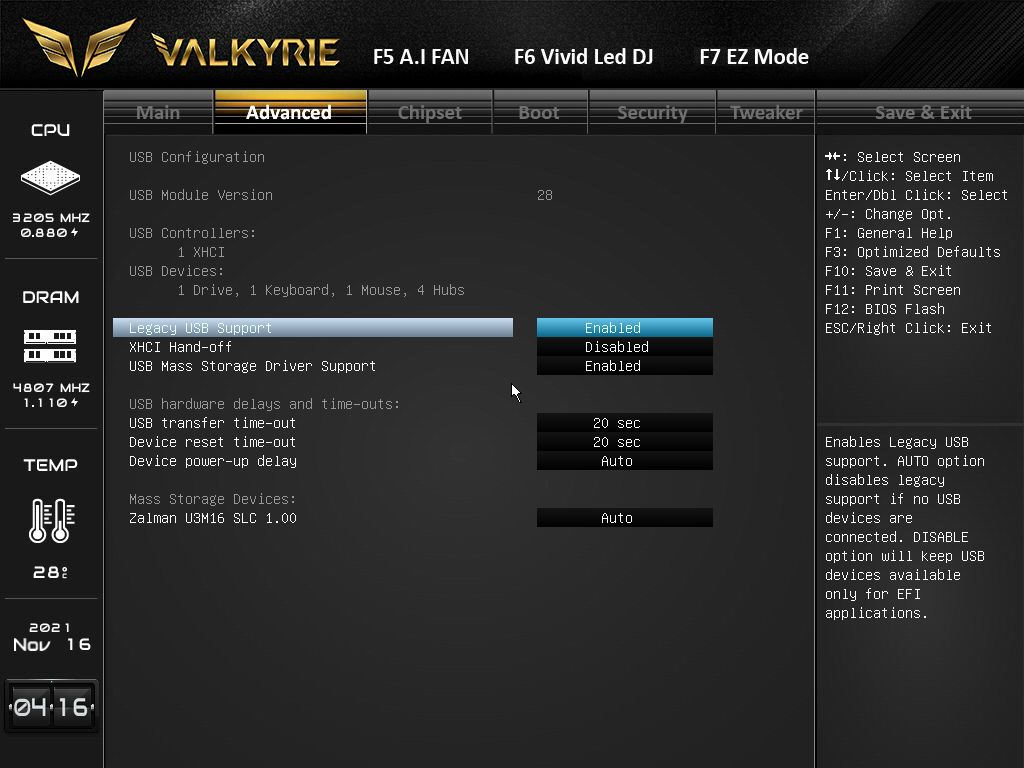









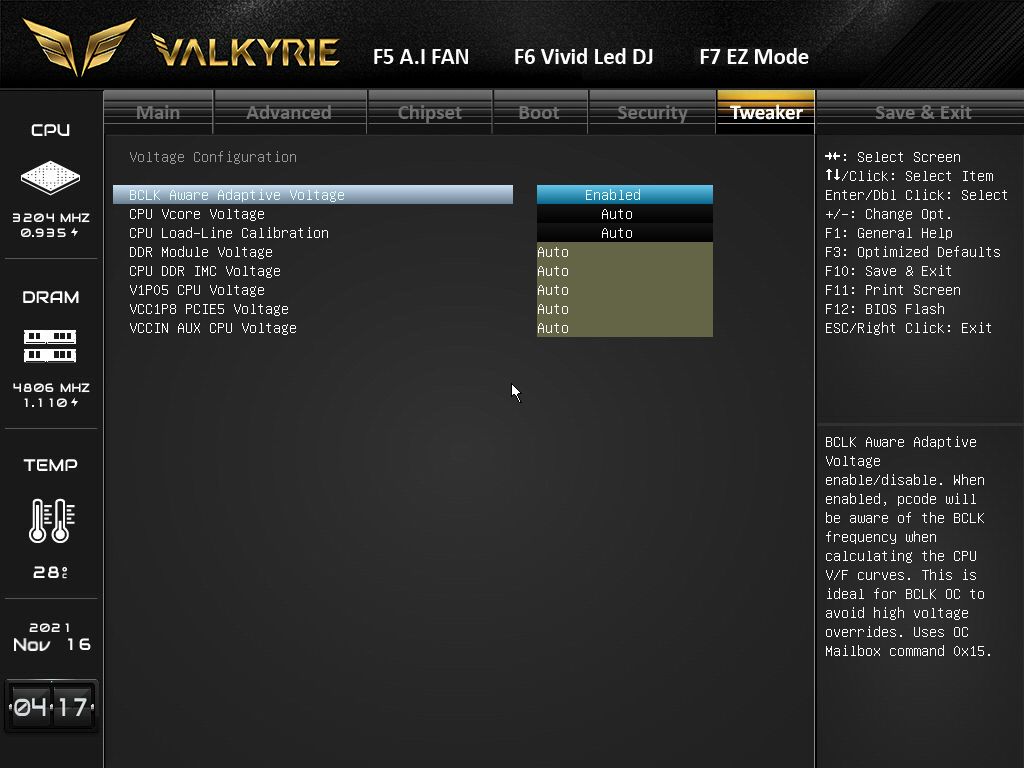
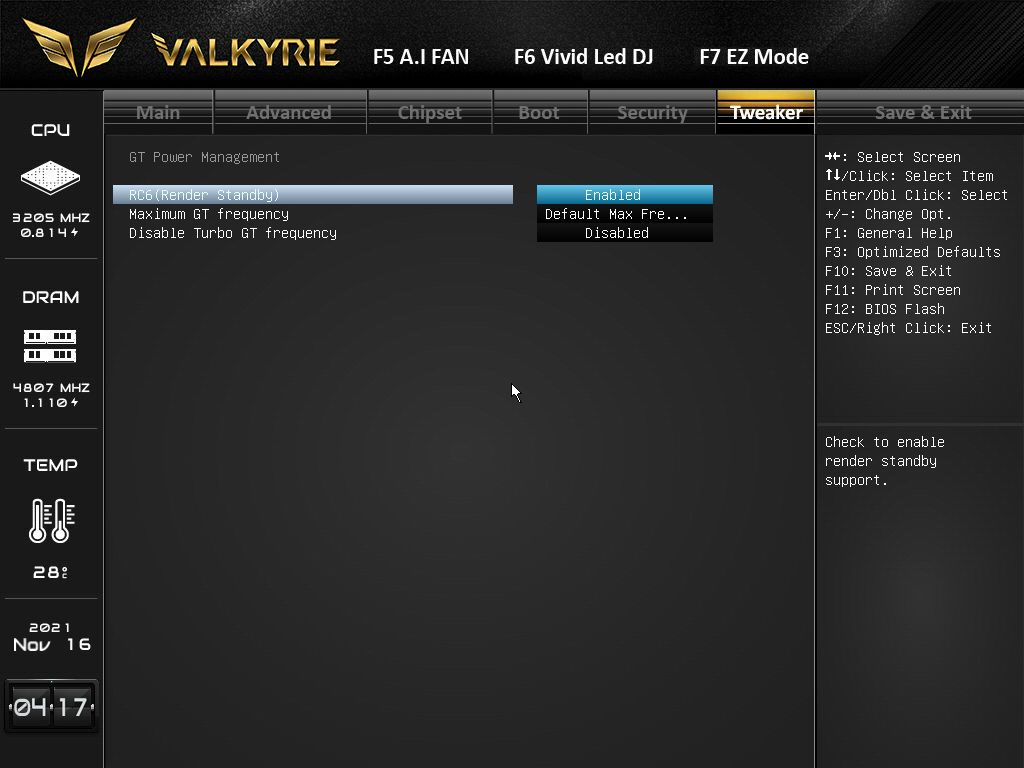
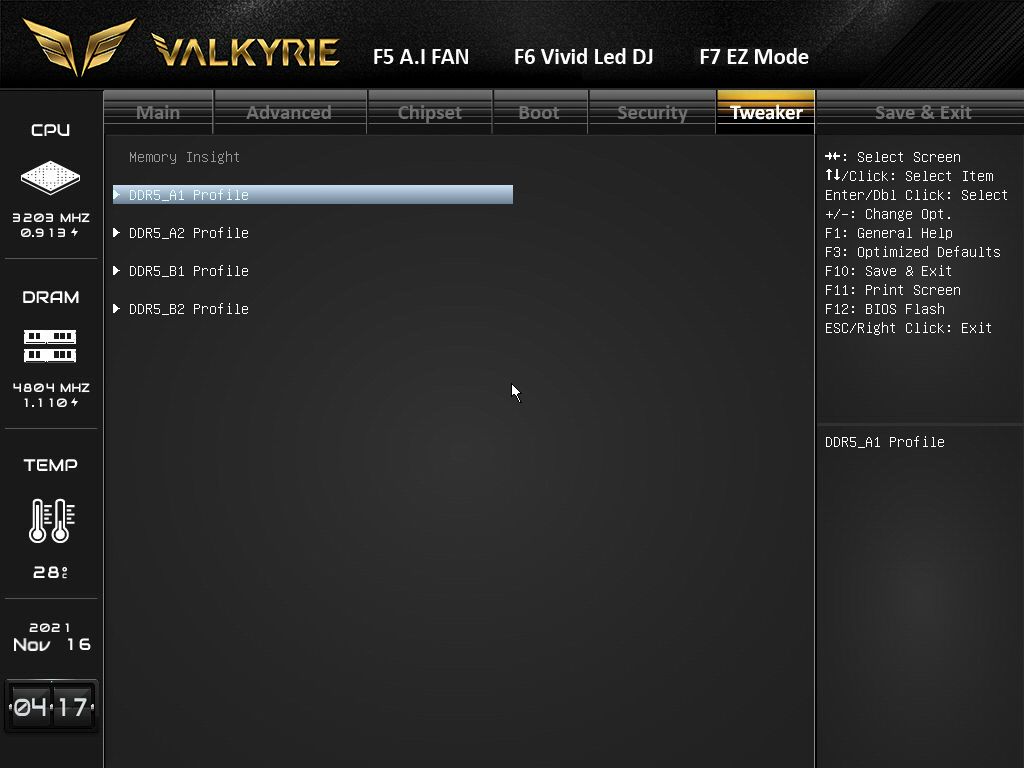
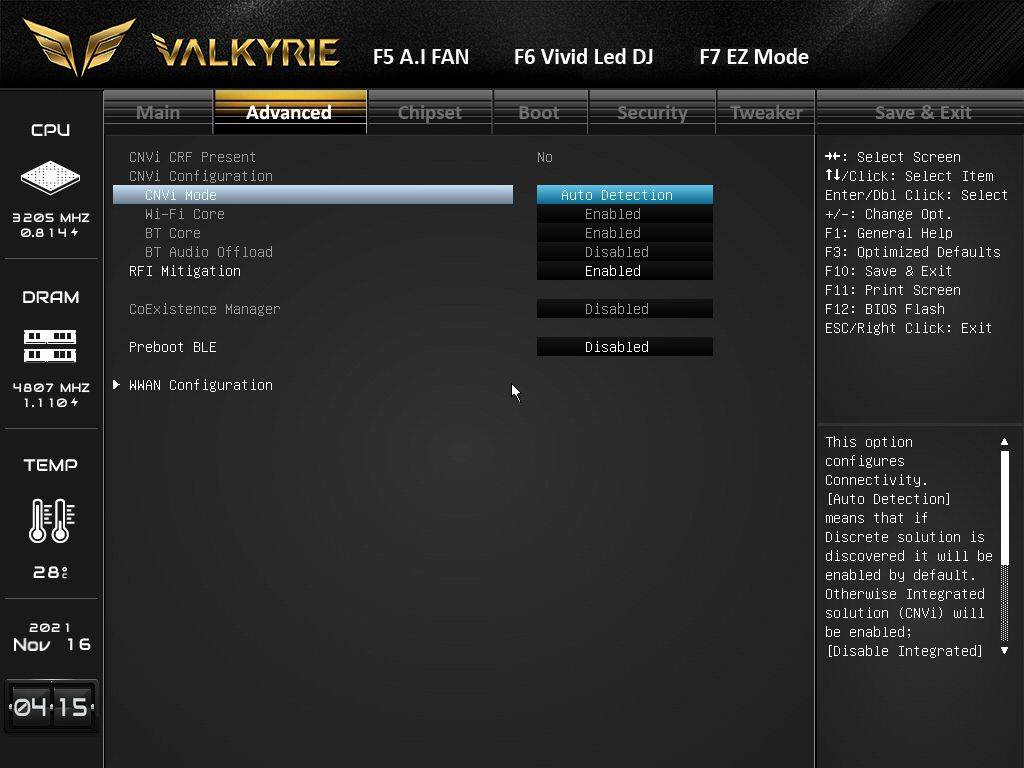

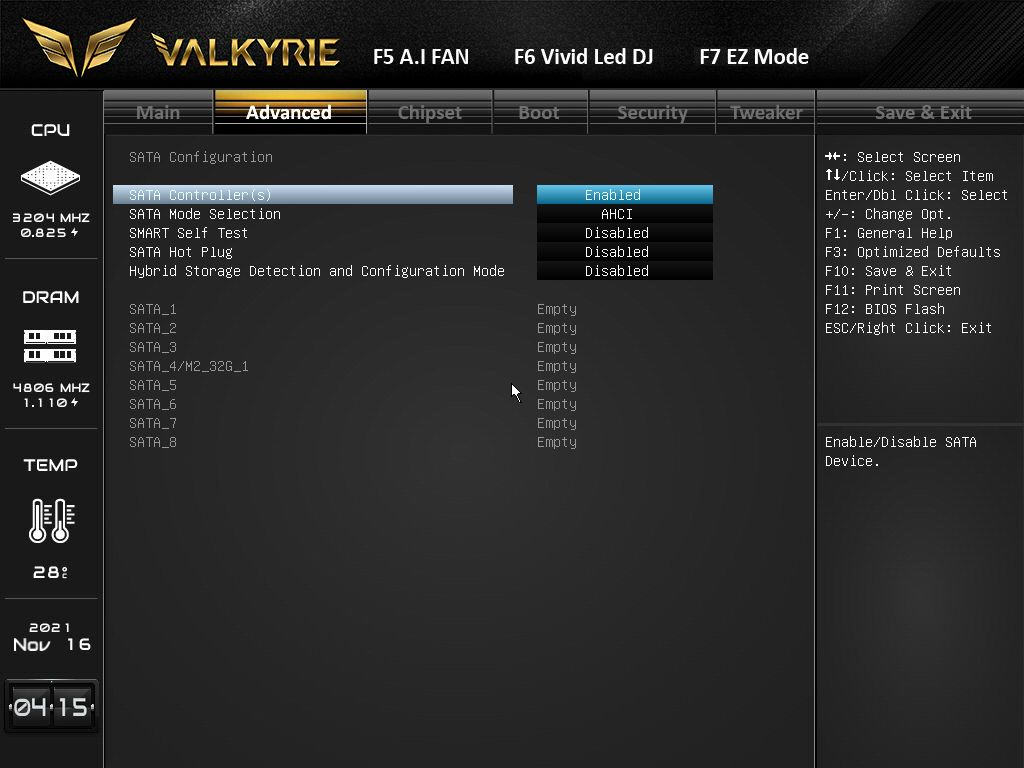

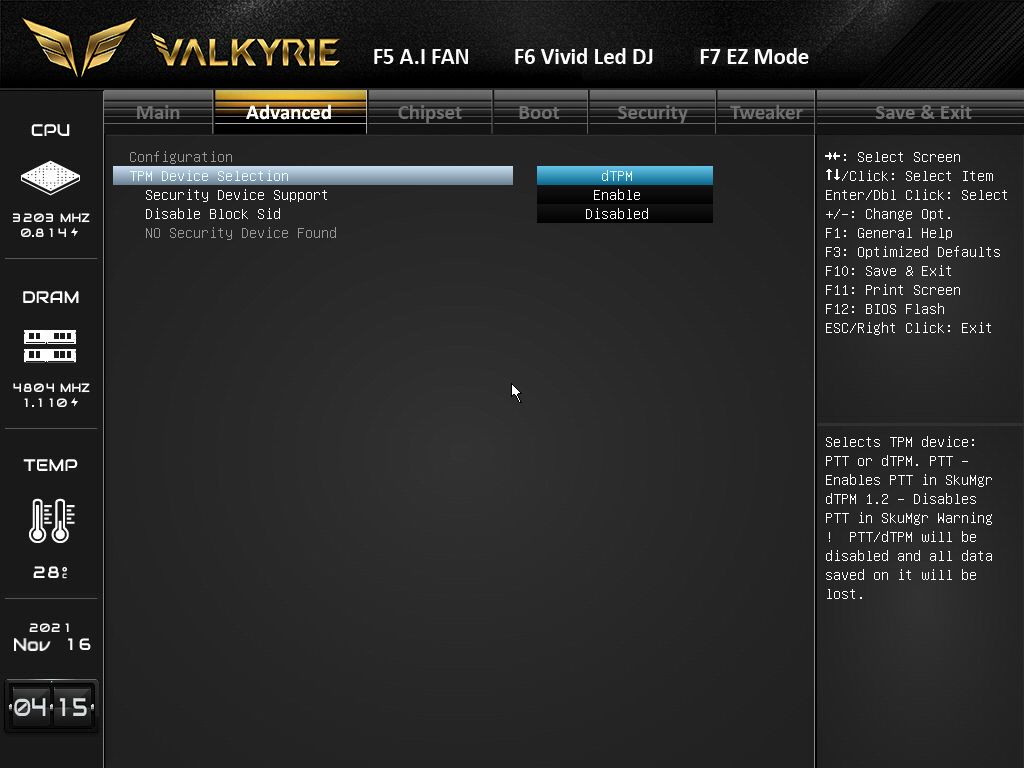


Software
Biostar uses a single application called Aurora to cover multiple functions, including Fan control, RGB lighting, monitoring, overclocking and more, but little has changed in the Z690 version. Once opened, there is a menu system in the left column with a larger right-hand side to display the information. With Aurora, you can control system volume (Smart Ear), canned power plans (GT Touch), RGBs (Vivid LED DJ), Fans (A.I Fan), hardware monitoring (H/W Monitor) and overclocking/overvolting (OC/OV).
Overall, I like this software. The user interface is easy to read and find the items you are looking for. Fan, RGB, and overclocking control worked without issue. I would like to see more temperatures in the hardware monitor section (VRMs, for example), but what’s there was informative, if only at a high level.


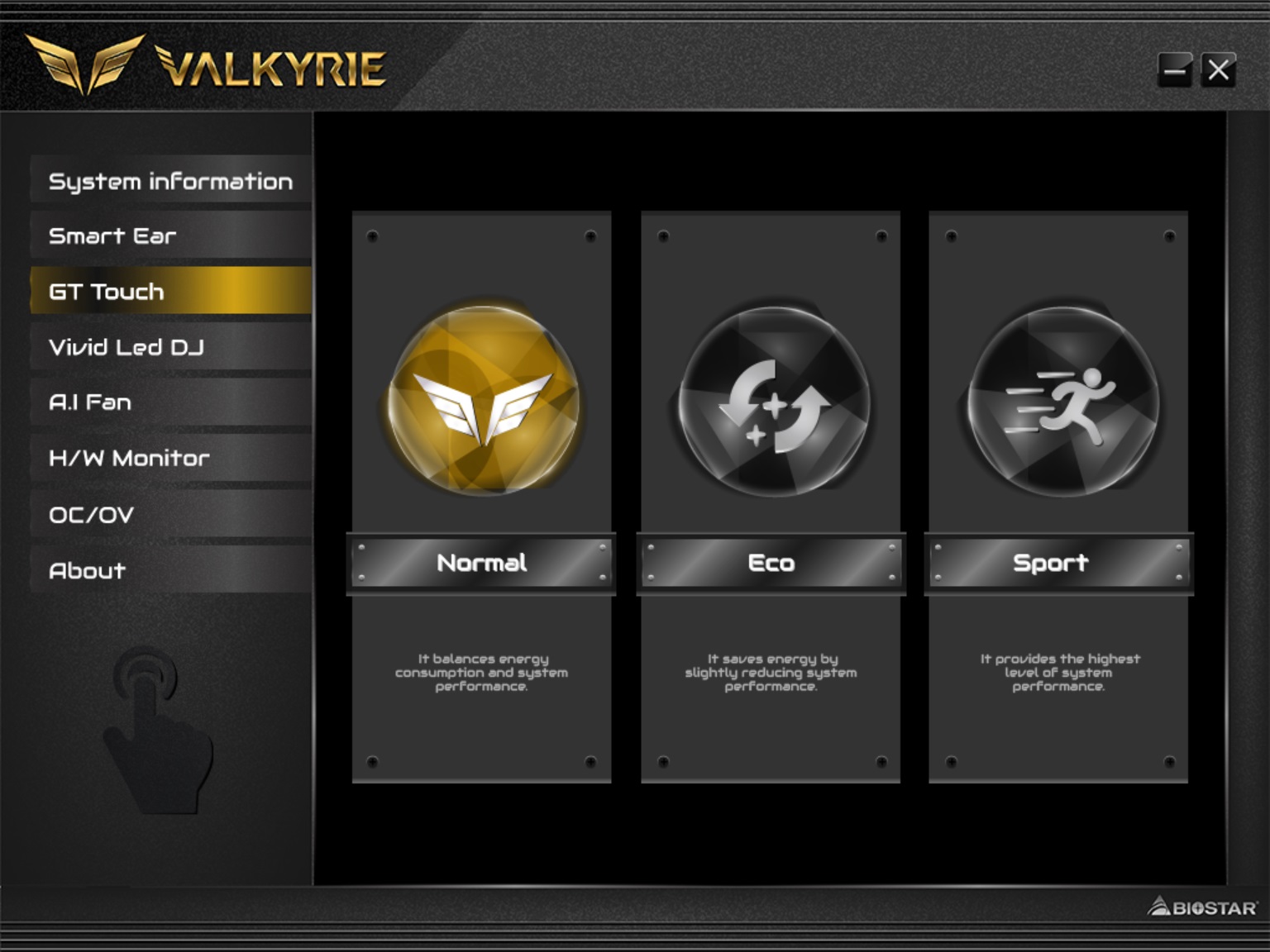



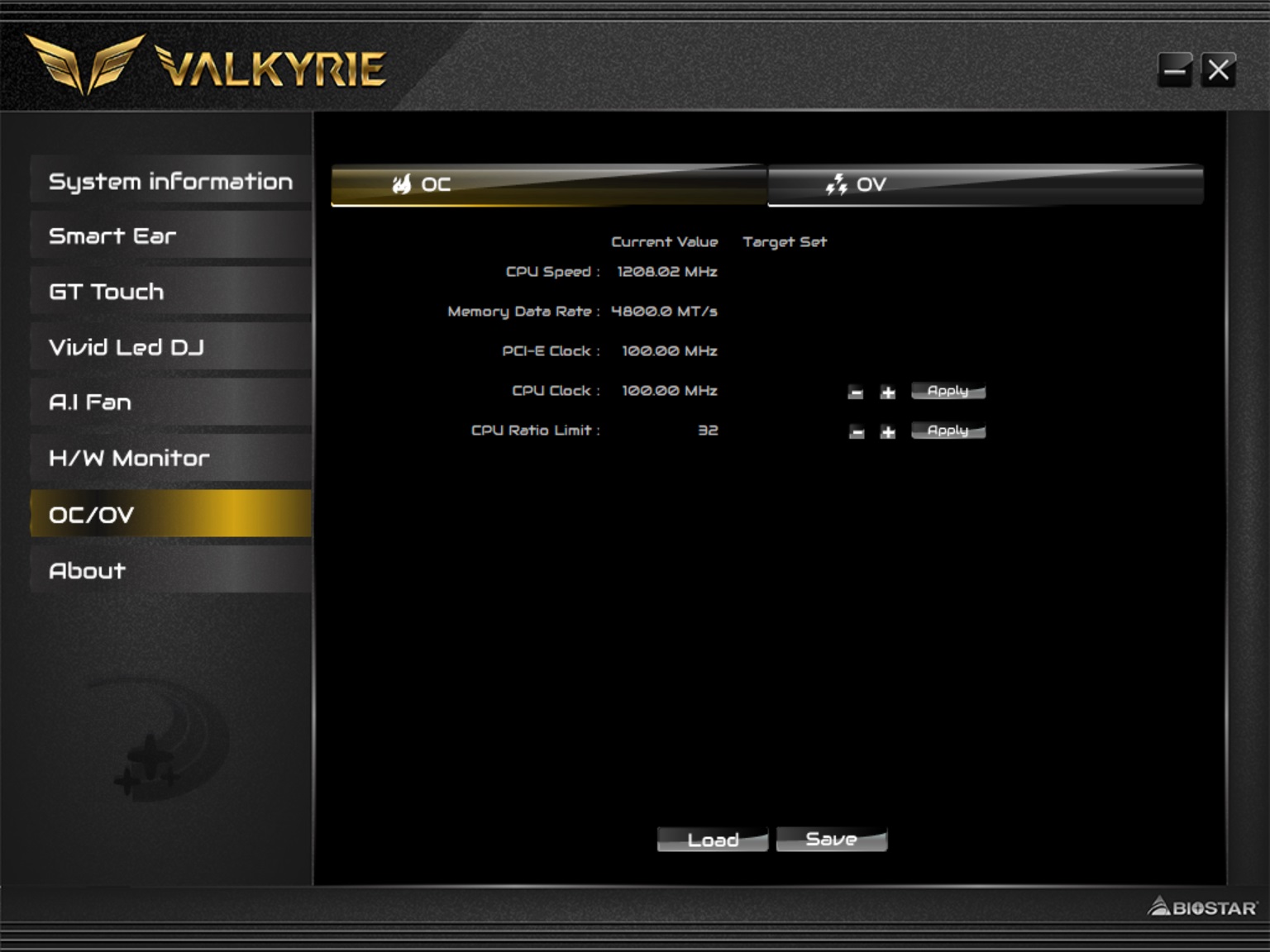

Test System / Comparison Products
As of October 2021, we’ve updated our test system to Windows 11 64-bit OS with all updates applied. We kept the same Asus TUF RTX 3070 video card from our previous testing platforms but updated the driver to version 496.13. Additionally, our game selection was updated, as noted in the table below. We use the latest non-beta motherboard BIOS available to the public unless otherwise noted. The hardware used is as follows:
Test System Components
| CPU | Intel Core i9-12900K |
| Memory | Kingston Fury DDR5 5200 CL40 (9KF552C40BBK2-32) |
| Row 2 - Cell 0 | GSkill Trident Z DDR5 5600 CL36 (F5-5600U3636C16GX2-TZ5RK) |
| GPU | Asus TUF RTX 3070 |
| Cooling | MSI MEG Coreliquid S360 |
| PSU | EVGA Supernova 850W P6 |
| Software | Windows 11 64-bit (21H2, Build 22000.282) |
| Graphics Driver | NVIDIA Driver 496.13 |
| Sound | Integrated HD audio |
| Network | Integrated Networking (GbE or 2.5 GbE) |




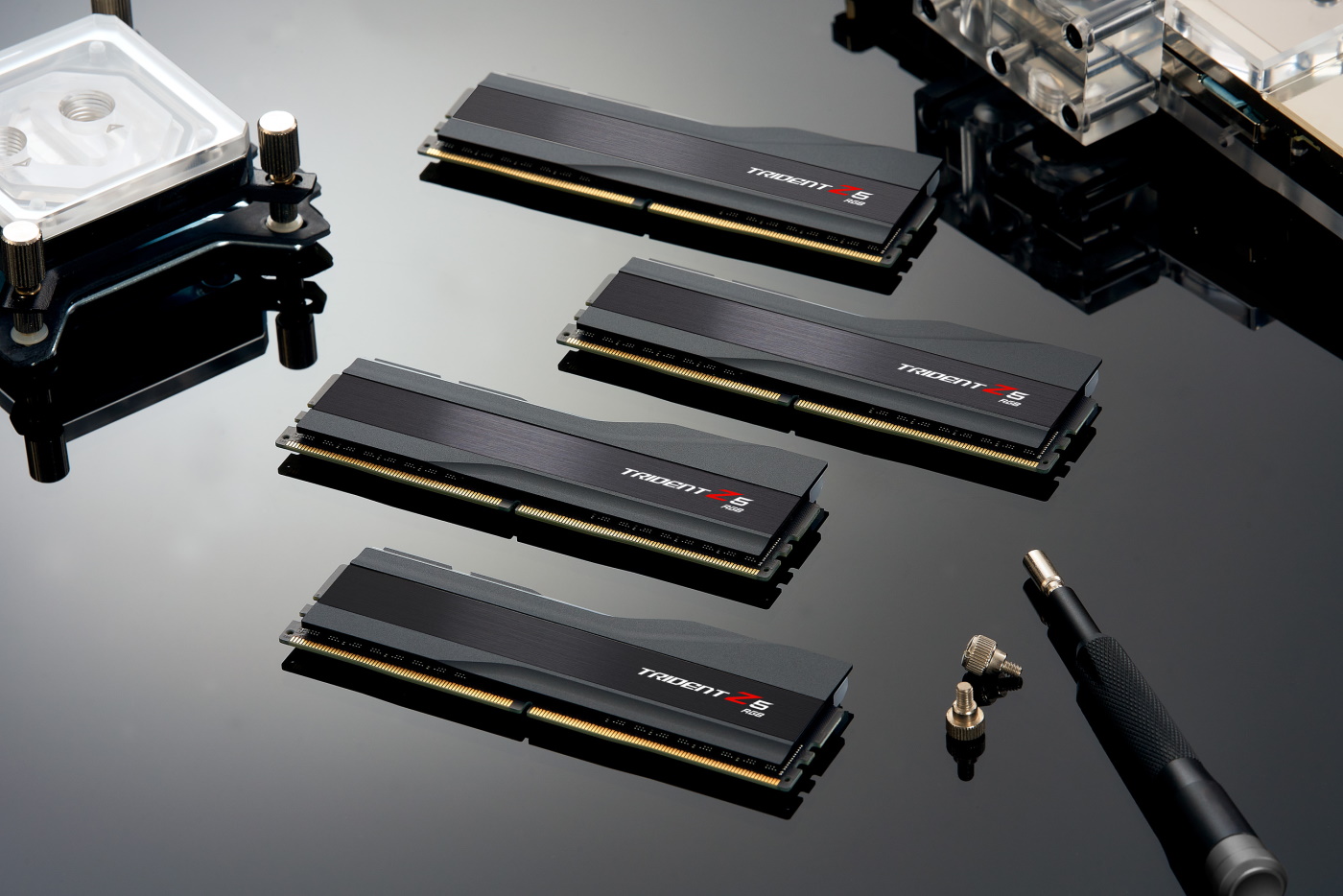


EVGA supplied our Supernova 850W P6 power supply (appropriately sized and more efficient than the outgoing 1.2KW monster we used) for our test systems, and GSkill sent us a fast and good-looking DDR5-5600 (F5-5600U3636C16GX2-TZ5RK) memory kit for launch day testing. MSI and Asus also sent launch day kits.
Benchmark Settings
| Biostar Z690 Valkyrie | Row 0 - Cell 1 |
| Procyon | Version 2.0.249 64 |
| Row 2 - Cell 0 | Office Suite, Video Editing (Premiere Pro), Photo Editing (Photoshop, Lightroom Classic) |
| 3DMark | Version 2.20.7290 64 |
| Row 4 - Cell 0 | Firestrike Extreme and Time Spy Default Presets |
| Cinebench R23 | Version RBBENCHMARK330542 |
| Row 6 - Cell 0 | Open GL Benchmark - Single and Multi-threaded |
| Blender | Version 2.93.1 |
| Row 8 - Cell 0 | Full benchmark (all six sub-tests) |
| Application Tests and Settings | Row 9 - Cell 1 |
| LAME MP3 | Version SSE2_2019 |
| Row 11 - Cell 0 | Mixed 271MB WAV to mp3: Command: -b 160 --nores (160Kb/s) |
| HandBrake CLI | Version: 1.2.2 |
| Row 13 - Cell 0 | Sintel Open Movie Project: 4.19GB 4K mkv to x264 (light AVX) and x265 (heavy AVX) |
| Corona 1.4 | Version 1.4 |
| Row 15 - Cell 0 | Custom benchmark |
| 7-Zip | Version 21.03-beta |
| Row 17 - Cell 0 | Integrated benchmark (Command Line) |
| Game Tests and Settings | Row 18 - Cell 1 |
| Far Cry 6 | Ultra Preset - 1920 x 1080, HD Textures ON |
| F1 2021 | Ultra Preset - 1920 x 1080, HBAO+, RT Med, TAA + 16xAF, Bahrain, FPS Counter ON |
MORE: Best Motherboards
MORE: How To Choose A Motherboard
Get Tom's Hardware's best news and in-depth reviews, straight to your inbox.
MORE: All Motherboard Content
Current page: Firmware, Software and Test System
Prev Page Features and Specifications Next Page Benchmarks and Final Analysis
Joe Shields is a staff writer at Tom’s Hardware. He reviews motherboards and PC components.
-
escksu Crazy price....Reply
Do take note that z690 chipset has 8x dmi 4.0 (equivalent to 8x pcie 4.0). While its double that of amd's x570, you will still run into bottle neck if you populate all the m.2 slots with pcie 4.0 ssd and run raid 0.
Intel's pcie 4.0 m.2 slots run off the chipset. -
PiranhaTech I'm very surprised that Biostar is releasing a $600 motherboard under the Biostar name, not creating another brandReply
I don't mind saying that I had Biostar for project PCs before, and they have been overall reliable. That being said, they have a certain reputation. -
Koldur Replyescksu said:Crazy price....
Do take note that z690 chipset has 8x dmi 4.0 (equivalent to 8x pcie 4.0). While its double that of amd's x570, you will still run into bottle neck if you populate all the m.2 slots with pcie 4.0 ssd and run raid 0.
Intel's pcie 4.0 m.2 slots run off the chipset.
One M.2 works directly on the CPU, the others work on the chipset. -
-Fran- Reply
Unless you're talking about this particular motherboard wiring, that's not necessarily the case. Intel allows the Z690 chipset to use x8 slpit on the GPU PCIe5 link to feed more NVMe's and other connectivity. That's the chipset's not-so-dirty little secret on how they can provide so many NVMe devices.Koldur said:One M.2 works directly on the CPU, the others work on the chipset.
So, in other words, depending on how the motherboard vendor decided to make the split, you can have the PCIe5 x16 for the GPU run at x8 speed, which is basically PCIe4 X16 so the other 8 lanes are used for the NVMe/sATA ports in conjuction with the DMI links.
Regards. -
larkspur Reply
I could certainly be wrong, but that's not how I understand this:-Fran- said:Unless you're talking about this particular motherboard wiring, that's not necessarily the case. Intel allows the Z690 chipset to use x8 slpit on the GPU PCIe5 link to feed more NVMe's and other connectivity. That's the chipset's not-so-dirty little secret on how they can provide so many NVMe devices.
So, in other words, depending on how the motherboard vendor decided to make the split, you can have the PCIe5 x16 for the GPU run at x8 speed, which is basically PCIe4 X16 so the other 8 lanes are used for the NVMe/sATA ports in conjuction with the DMI links.
Regards.
Alder Lake chips expose up to 16 lanes of PCIe 5.0 and an additional four lanes of PCIe 4.0 from the chip for M.2 storage. Those lanes are split into x16 or x8 for GPUs, or x4/x4 for storage slots. PCIe AICs (Add-In Cards) that support PCIe 5.0 M.2 SSDs (which don't exist yet) are already in the works.
Sounds more like the CPU provides PCIe 5 x16 (or x8 x8) mainly for GPUs and an additional PCIe 4 x4 for m.2 storage. The chipset gets 12 additional lanes of PCIe 4.0 that of course gets shared with its 16 lanes of PCIe 3 over the x8 DMI 4. So a mobo could have one m.2 slot on the x4 4.0 CPU lanes and three x4 4.0 m.2 slots off the chipset (which would be limited by the DMI)
Just like Z590, the 14nm Z690 chipset sports 16 lanes of PCIe 3.0, but Intel also added 12 lanes of PCIe 4.0, which is a nice boost to overall connectivity. Intel also doubled the throughput of the DMI connection between the chip and chipset from an x8 DMI 3.0 pipe, which clocks in at 7.88 GB/s, to an x8 DMI 4.0 connection that delivers 15.66 GB/s. This much-needed bandwidth improvement allows for more throughput from attached RAID arrays. -
-Fran- Reply
The key of that quote is here: "Those lanes are split into x16 or x8 for GPUs, or x4/x4 for storage slots". The "x8" split I talk about gets further divided for whatever purpose they want to give it; my take is they're using that on this gen Z690 for the plethora of NVMe drives and sATA ones, unless they're using only the DMI4 link, which implies they'll need to cut something else from transfering (being used) and make just 1 (or 2, tops) NVMe slots full speed as the CPU only exposes 1 x4 PCIe4 for it (them).larkspur said:I could certainly be wrong, but that's not how I understand this:
<quote>
Sounds more like the CPU provides PCIe 5 x16 (or x8 x8) mainly for GPUs and an additional PCIe 4 x4 for m.2 storage. The chipset gets 12 additional lanes of PCIe 4.0 that of course gets shared with its 16 lanes of PCIe 3 over the x8 DMI 4. So a mobo could have one m.2 slot on the x4 4.0 CPU lanes and three x4 4.0 m.2 slots off the chipset (which would be limited by the DMI)
As I said, it's up to the motherboard maker how they "divide and conquer". AMD motherboards also have this kind of fine print with more than 1 NVMe drive in it. This chipset can, maybe, get away with 2 NVMe drives from the CPU at full speed without tapping into the PCIe5, but I seriously doubt motherboard makers will include the muxers required to do that, so maybe they're just abusing the DMI link and have only 1 NVMe linked to the CPU.
Here's a good breakdown of the Z690 features and a diagram: https://www.guru3d.com/news-story/intel-z690-chipset-diagram-shows-pcie-5-x16ddr4-or-ddr5-memoryand-dmi-4-x8.html
Regards. -
Koldur Reply-Fran- said:The key of that quote is here: "Those lanes are split into x16 or x8 for GPUs, or x4/x4 for storage slots". The "x8" split I talk about gets further divided for whatever purpose they want to give it; my take is they're using that on this gen Z690 for the plethora of NVMe drives and sATA ones, unless they're using only the DMI4 link, which implies they'll need to cut something else from transfering (being used) and make just 1 (or 2, tops) NVMe slots full speed as the CPU only exposes 1 x4 PCIe4 for it (them).
As I said, it's up to the motherboard maker how they "divide and conquer". AMD motherboards also have this kind of fine print with more than 1 NVMe drive in it. This chipset can, maybe, get away with 2 NVMe drives from the CPU at full speed without tapping into the PCIe5, but I seriously doubt motherboard makers will include the muxers required to do that, so maybe they're just abusing the DMI link and have only 1 NVMe linked to the CPU.
Here's a good breakdown of the Z690 features and a diagram: https://www.guru3d.com/news-story/intel-z690-chipset-diagram-shows-pcie-5-x16ddr4-or-ddr5-memoryand-dmi-4-x8.html
Regards.
Check that diagram a bit better and you see that there is a seperate "1x4 lanes PCIe 4.0" on the CPU. This is common knowledge and implemented like this on all motherboards I have seen (probably every motherboard, but I am not about to check every single on of them to be a 100% sure ;) ). My own Gigabyte Z690 UD DDR4 board also has it with the PCIe 16x still available at PCIe 5 and 16 lanes. -
-Fran- Reply
That's what I said... The point is when you populate more than 1 NVMe slot, that single PCIe4 link is not going to be used for the 2nd NVMe onwards from what I can tell.Koldur said:Check that diagram a bit better and you see that there is a seperate "1x4 lanes PCIe 4.0" on the CPU. This is common knowledge and implemented like this on all motherboards I have seen (probably every motherboard, but I am not about to check every single on of them to be a 100% sure ;) ). My own Gigabyte Z690 UD DDR4 board also has it with the PCIe 16x still available at PCIe 5 and 16 lanes.
Regards. -
Koldur Reply-Fran- said:That's what I said... The point is when you populate more than 1 NVMe slot, that single PCIe4 link is not going to be used for the 2nd NVMe onwards from what I can tell.
Regards.
This is what you said:
Unless you're talking about this particular motherboard wiring, that's not necessarily the case. Intel allows the Z690 chipset to use x8 slpit on the GPU PCIe5 link to feed more NVMe's and other connectivity. That's the chipset's not-so-dirty little secret on how they can provide so many NVMe devices.
And this is a 100% wrong. The x8 split that is allowed has nothing to do with NVMe ports.